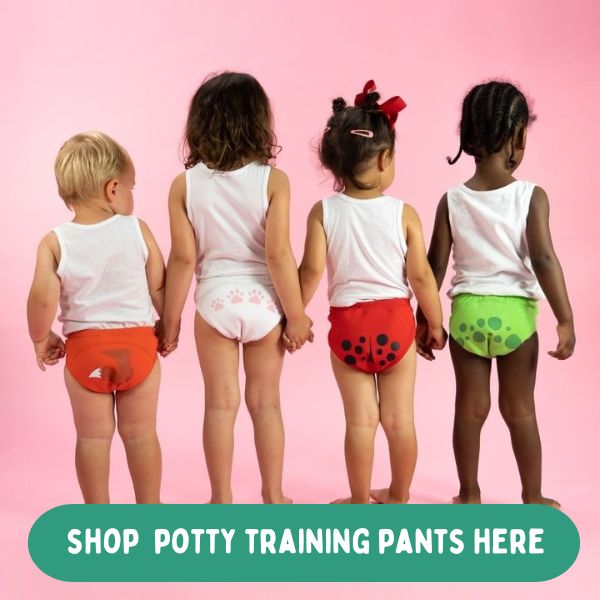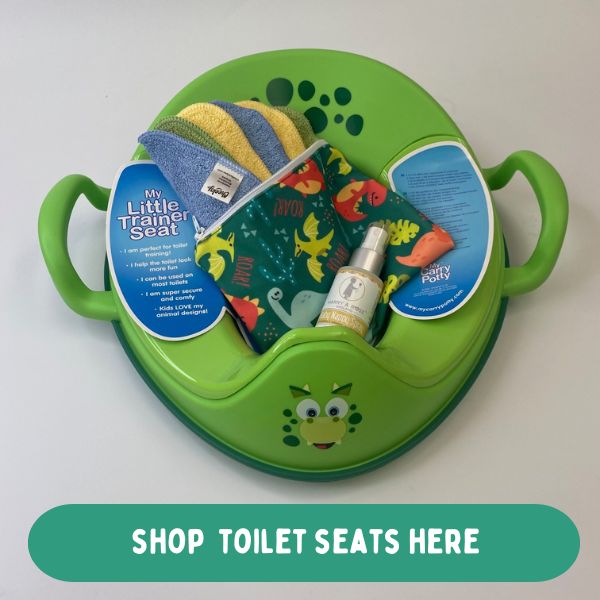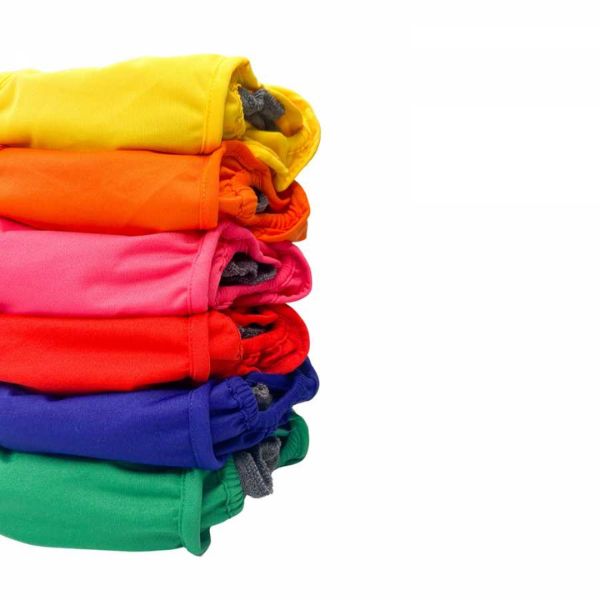Why Are Children Potty Training Later? And How to Help
Potty training is an essential milestone in your child’s development, popular media reports that some children are starting primary school still in nappies. This may be caused by the convenience of disposable nappies, the impact of COVID-19, and parents' busy lifestyles. Understanding why your child might not be ready to toilet train when their friends do and how to support them through this process can help ensure a smoother transition to independence.
Why Are Children Potty Training Later?
1. Absorbent Nappies
Modern disposable nappies are designed to be incredibly absorbent, reducing the discomfort associated with wetness, and increasing the length of time between changes.
While this is convenient, it means that children may be less aware of their bodily functions, delaying the readiness needed for potty training.
The lack of immediate feedback from wetness can make it harder for children to connect their actions with the need to use the toilet.
We decided to just ditch nappies when my eldest boys third birthday was looming as dryness was a requirement of his nursery school. We hung out in the garden in just a t-shirt and I trailed after him with the potty waiting to catch something so he would make the connection.
He was shocked every time he wee'd for the first day, up to then, in super absorbent 'sposies he'd had no idea he was going.
Conversely, his younger brother potty trained at 16 months - in cloth nappies!
2. Busy Lifestyles
In today’s fast-paced world, parents are juggling demanding work schedules and household responsibilities. As a result, you may prioritise convenience over starting potty training early, relying on nappies for longer.
While understandable, this can delay the process, making it harder for older children to transition smoothly.
3. COVID-19
The COVID-19 pandemic disrupted routines and developmental milestones for many young children. According to reports from The Guardian and BBC News, children born or raised during the pandemic had less social interaction and access to childcare settings, where potty training often begins or is needed.
4. Lack of Time or Knowledge
You may feel unprepared to begin potty training, about when to start or feel uncertainty about how to approach the process. This can lead to delays as you wait for clear signs of readiness, that are not immediately apparent.
The Impact of Delayed Potty Training
While every child’s readiness for potty training is different, delaying the process can lead to several challenges. Starting at an appropriate time helps children develop independence and confidence, making transitions to school and childcare settings smoother.
1. Delayed Independence
Prolonged use of nappies can delay a child’s awareness of their bodily functions and hold up their self-care skills. This may make the transition to preschool or school more challenging.
2. Financial Challenges
With disposable nappies being a recurring expense, the financial impact of delayed potty training can add up over time.
3. Difficulties at School
Children who are not potty trained when they start preschool may face logistical challenges, such as finding an adult to assist with changes, or their peers noticing smells. This can lead to embarrassment and social challenges, potentially affecting their confidence.
4. Health Concerns
Extended nappy use may increase the risk of rashes or infections, especially if children are not changed frequently. Potty training can help reduce these risks by promoting regular toileting habits.
How to Support Late Potty Training
Helping an older child with potty training requires patience. Here are some tips to support their journey:
1. Introduce Fun Resources
Use age-appropriate books or videos to make potty training interesting. Stories featuring characters going through the same experience can help older children understand and feel confident.
2. Include Potty Training In Daily Activities
Make regular potty breaks part of your child’s routine, such as when they first wake up, before you go out anywhere, before meals, before bath time and before bed. Consistency helps create a habit and reinforces the connection between bodily signals and using the toilet. Travel potties mean you can carry on when away from home.
3. Use Cloth Training Pants
Switching to reusable nappies or reusable potty training pants can help children feel wetness more acutely, making them more aware of their bodily functions. This can encourage quicker recognition of the need to use the potty.
It will also stop you spending more on single use nappies. They can be sold on when your child has finished with them. You can buy reusable pull ups too.
4. Let Them Choose Their Supplies
Allow your child to pick out their potty or training pants. Giving them ownership and control can make the process more exciting and less daunting. They come in bright colours and patterns, with animals on them if that is what your little one likes. Your child needs to find sitting on the potty fun.
5. Celebrate Small Wins
Praise your child for their efforts and celebrate milestones, no matter how small. Positive reinforcement can boost their confidence and motivation to keep trying. We loved a sticker chart and the odd smartie!
6. Keep Potties Available
We ended up with a toilet seat upstairs and downstairs with a stool that was used for years afterwards as a sink stool. We had a 'posh' potty in the lounge, a portable potty that came out and about with us and then a basic one as my first were twins! Though they potty trained over 10 months apart, readiness is individual to each child.
What to do if you are worried
If you are concerned potty training is not working at all, or your little one is approaching school age and showing no signs or interest, or if they get dry then regress lots there are resources out there to help you. The ERIC website is useful, and there are kids absorbent pants available for little slip ups during the school day helping their clothes stay dry.
Understanding the reasons behind delayed potty training and taking proactive steps to support your child can make this milestone less stressful for everyone involved. Every child is different, so remember to be patient and celebrate their progress. If you’d like to share your experiences or ask questions, feel free to leave a comment below.
You can contact us directly for advice, the team chat pee, poo and periods all day long and are happy to help! We’d also love to hear your experiences or answer any questions in the comments!
You can read more of our blogs for helpful tips and guides:
How to choose a potty training seat
About the Author: Kirstin on our customer services team loves spending her days helping customers with their reusable period product needs and advising cloth nappy using families. Kirstin lives with her three teenagers and loves walking, cycling and sea swimming year round in our beautiful bay.She is excited to share her extensive knowledge and enthusiasm for all things reusable, helping a new generation of parents navigate eco-friendly choices for their children.






